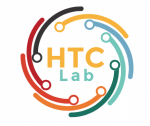Rapid technological advancements and global workforce aging shape the future of work. Drawing on the technology acceptance model, our study aims to connect the literature on aging with the research on technology use in organizations. At its heart, the technology acceptance model suggests that the two core components perceived usefulness and perceived ease of use predict the attitude toward a new technology. We connect these components with two age-related processes: first, we suggest a motivational pathway via future time perspective, including one’s perceived future opportunities and remaining time at work. Second, we propose a capability pathway via cognitive constraints, including one’s perceived struggle to process new information (i.e., perceived processing speed difficulties) and the perceived struggle to organize one’s work (i.e., perceived organization difficulties). Moreover, we explore digital leadership as a potential buffer to the detrimental relations between age and technology acceptance. We pre-registered our hypotheses and tested them using three-wave data of 643 employees. Our findings support our hypotheses for the motivational pathway, showing that age is negatively linked to attitude toward new technology via future time perspective and subsequent perceived usefulness as well as perceived ease of use. Digital leadership buffered the negative indirect relations between age and attitude toward new technology. For the capability pathway, the results were opposite to what we expected. Together, our findings put the link between age and technology acceptance into a more positive light than previous research and suggest that motivational and capability-related forces are interwoven in predicting attitude toward new technology.
Latest posts by Ryan Watkins (see all)
- Needed in Empirical Social Science: Numbers - June 23, 2024
- Investigating the Role of Explainability and AI Literacy in User Compliance - June 20, 2024
- Philosophical debate on use of AI in science - June 9, 2024
